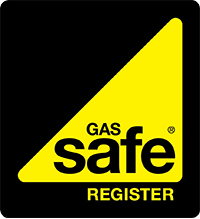How Often Should You Have Your Chimney Swept (and Why?)
Like servicing your car, stoves run best with a degree of regular maintenance.
Possibly the most important maintenance task for all for stove-owners is keeping their chimney in tiptop condition. Doing so allows exhaust fumes from your stove to safely vent into the outside atmosphere, keeping your home smoke-free and your fire burning efficiently.
Reasons to Sweep Your Chimney
As fuel burns within your stove, so impurities are released. While these are generally carried away with the exhaust fumes from your fire, it is a fact of life that a proportion of these impurities end up adhering to the inside of your chimney. The less efficient your stove is, or the slower that the fumes travel up your chimney, the higher the rate of deposit.
Over time these deposits of creosote can build into a crust around in the inside of your chimney, blocking the free movement of smoke.
In extreme cases a build-up of creosote can even catch light, leading to house fires. For this reason alone having your chimney swept regularly should be considered a vital maintenance task.
In addition to the build-up of soot and creosote, it is also important to appreciate that other obstructions may make their way into your chimney. For example, birds may nest within the confines of an unused chimney. Even in cases where bird-guards have been installed cobwebs, insects and general environmental debris can cause partial blockages.
In other words, if you have a fire or stove of any form it is essential to have your chimney swept on a regular basis.
How Often Should A Chimney Be Swept?
The frequency at which chimneys should be swept can only ever be a rough approximation. The reason is that so many factors can affect how quickly obstructions can build up.
The single most important factor of all however is the type of fuel you are burning, as some tend to burn much cleaner than others.
That said, the National Association of Chimney Sweeps (NACS) suggests the following regime:
- Smokeless Fuel Stoves – at least once per year
- Wood Burning Stoves & Coal Stoves – quarterly when in use
- Oil Stoves & Gas Stoves – once a year
It is important to underline the fact that many owners of gas stoves believe that chimney maintenance is unnecessary, however, this is far from the truth. Even in clean-burning fuels like gas, some chimney maintenance is recommended.
How Can I Keep My Chimney Cleaner For Longer?
If the most important reason for sweeping your chimney is ridding it of creosote build-ups then it so follows that any product that will reduce creosote production may help to keep your chimney cleaner for longer.
Here are some of the most reliable suggestions for doing just that:
Burn Only Seasoned Wood – Freshly-felled logs are full of moisture and impurities. This is why most stove-owners opt for seasoned wood. As the wood has been allowed to rest and dry out, so the impurities become less. The end result is a cleaner and more reliable fuel which will keep your chimney clean for longer.
Start With a Hot Fire – Anyone who has started a fire using kindling will know that it takes time for those first few bits of wood to turn into a roaring inferno. In these early stages of a fire, the air in your flue will be relatively cold. This increases the chances of creosote condensation. To counteract this, some authorities recommend turning up the heat rapidly when starting a fire; doing so will speed up the exit of exhaust fumes from your chimney and so reduce deposition.
Have Your Chimney Properly Lined – Lining a chimney helps to provide a smooth surface which creosote struggles to adhere to. It also helps to insulate your chimney and so keep smoke moving rapidly out into the property exterior.
Invest In Chimney Cleaning Logs – Chimney cleaning logs aren’t cheap, but they can prove highly beneficial. When burned in a stove they successfully break down deposits of creosote inside your chimney. These then fall harmlessly into your stove as soot to be removed. Here at Ignition Fires we stock a range of stove accessories and would be happy to offer guidance on their use.
Where Can I Find a Reliable Chimney Sweep?
With the resurgence in wood-burning stoves as a cost-effective way to heat the home, so the chimney sweep’s has also grown in recent years. The real question is where to find a reliable chimney sweep.
Fortunately, there are a number of national associations who train and accredit chimney sweeps. Selecting one of these individuals helps to ensure your chimney will be properly swept. Many sweeps will also give your stove a quick service at the same time, ensuring you’re fully prepared for winter.
Possibly the best place to find a chimney sweep in your area is to consult the HETAS website which maintains a database of approved chimney sweeps. Simply visit the database here and enter your location to find your nearest provider. Our showrooms also keep an up to date list of the local sweeps we know so why not give us a call.




